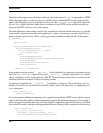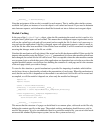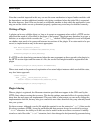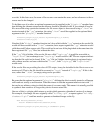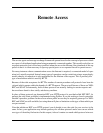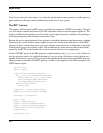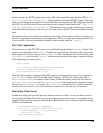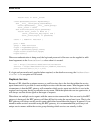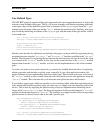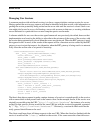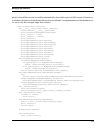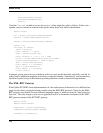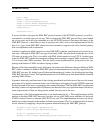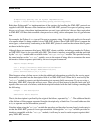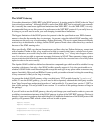
Remote Access
114
return host in self._allow:
class RpcGateway(netsvc.RpcGateway):
def __init__(self,group,users=None):
netsvc.RpcGateway.__init__(self,group):
self._allow = users
def authorise(self,login,password):
return self._allow == None or \
(self._allow.has_key(login) and \
self._allow[login] == password)
users = { "admin": "secret" }
port = 8000
group = "web-services"
httpd = HttpDaemon(port)
rpcgw = RpcGateway(group,users)
httpd.attach("/service",rpcgw)
httpd.start()
When user authentication is being used, the login and password of the user can be supplied as addi-
tional arguments to the RemoteService class when it is created.
url = "http://localhost:8000/service/validator"
service = netrpc.RemoteService(url,"admin","secret")
print service.echo(1,1L,1.1,"1")
If a login and password aren’t supplied when required, or the details are wrong, the Authentica-
tionFailure exception will be raised.
Duplicate Services
Because a URL identifies a unique resource, a conflict arises due to the fact that within the service
agent framework it is possible to create multiple services with the same name. What happens in this
circumstance is that the RPC gateway will remember which service agent was the first it saw in the
required service group, having a particular service name. While that particular service agent exists, it
will always use that service agent as the target of requests.
When there are multiple service agents with the same service name and the first one seen by the RPC
gateway is destroyed, the RPC gateway will then fall back to using the second one it saw. That is, the
RPC gateway will always use the service agent which it has known about the longest. In general, if you
intend to make services accessible using the RPC gateway, it is recommended that you always use
unique service names within the service group dictating which services are actually visible.



